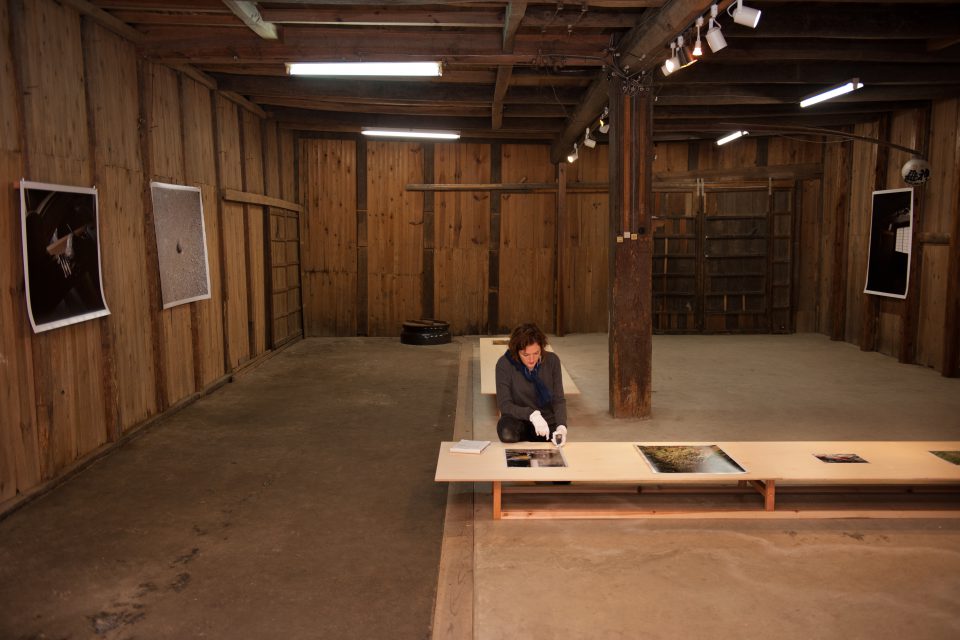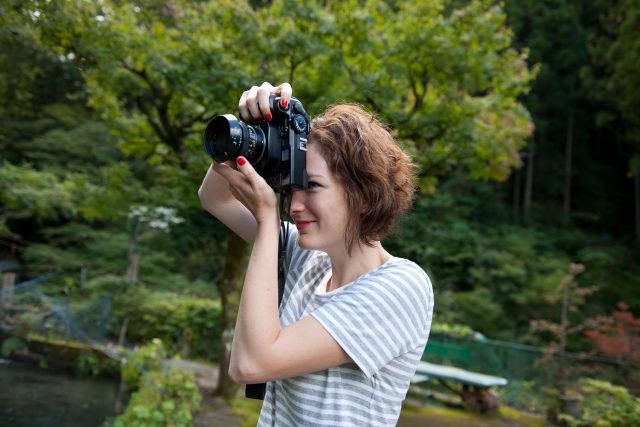
wytske van keulen
20104 Kamiyama Artist in Residence participant
Wytske van Keulen portrays people who, for disparate reasons, live their lives as outsiders. Her distinctive method of documenting – at once plain and empathetic – nevertheless resists the stubborn tendency toward marginalisation, whether emanating from society or from solitude. Both movements are revealed as a symptom of existential helplessness. On closer inspection, the position of the outsider can seldom be attributed to either voluntary withdrawal or imposed exclusion. It is necessary to breach this dichotomy and consider the existing condition in all its complexity and subtlety. Since graduating from St. Joost (BA) and Post-St. Joost Photography (MFA) in Breda (NL) Wytske van Keulen predominantly works on long-term documentary projects which she presents as artist books and slide installations. In 2008 she self-published the book We would come to doubt everything. And almost everyone would come to doubt., last January her latest book titled Sous cloche was published by Kominek Books from Berlin. Wytske van Keulen lives and works in Amsterdam.

Stick holding branch
Photography to me starts with personal encounters. I am interested in the life-stories of people, the choices they make in their lives and the consequences of these choices. Basically I let myself be guided by the people I ‘portray’, to be open for all kinds of possible situations and characteristics.
In Kamiyama I started off by driving around, meeting and talking with people from different ages and backgrounds, trying to get to know about the past, the former lively lumbering business, cultural habits and theories. Looked into a lot of old photographs too. I met hunters and farmers, teenagers and peers. People that grew up here following the footsteps of their ancestors and the ones that left the big cities behind. Some fleeing from danger, to start anew, building on dreams and ideals and others with no plans at all. I was overwhelmed by the kindness, hospitality and curiosity of the people.
However, for this exhibition I’ve deliberately chosen to select pictures in which the ‘portrayed’ are absent. These still lives and villagescapes show the presence of human life, but without the actual ‘subject’. These are images that captivate me and remain mysterious to me. Composition and light have become more important. Eventually the images altogether do probably make up for some sort of portrait of Kamiyama as a village, or even more so, a somewhat obscured journal of my time here.
Wytske van Keulen, Kamiyama, October 2014

[Comment]
Born in the Netherlands, Wytske van Keulen is an artist who uses photographs to tell stories of unique encounters. She goes to unfamiliar lands and composes photographic works of art that tell the stories of the people she meets there. When van Keulen came to Kamiyama, she began by quickly building relationships with people who were interesting to her according to her unique perspective, as she stated, “For me, photographs begin with personal encounters.” She selected some people in the community. In particular, she found people with independent spirits who chose unique ways of living their lives. By searching through her rangefinder for those with the strength to live in a self-reliant way, she discovered her lively subjects. However, the core of this collection is not just images of people. Rather, it is the objects and natural surroundings that give hints of these people’s daily lives that bring an even more life-like quality to the series.
For her work in Kamiyama, she began by talking with a variety of people, driving around in search of suitable targets. One can imagine a sort of road movie linking her encounters and the images. Her process allowed her to learn a lot from the town’s landscapes, history, culture, and customs. In the end, her subjects were hunters, farmers, junior high school students, and newly transplanted villagers. There were people from a range of occupations and generations. She said that every encounter was full of heartwarming kindness. This must be why her photos so clearly depict the individuality of each person, lending a dignity to the images of people in Kamiyama.
During her stay, encounters with people were her starting point, but through her encounters with this locale we call “Kamiyama,” perhaps one could say the entire townscape, centered on the main axis of the town, became the subject of her work. Her original goal was to make a photo book as the final product of her residency, but the final exhibition featured 457x560mm photographic prints in sequences either laid out flat or hung on the walls, but each of these pictures enabled the viewer to read various stories into the work. In this way, the photographs were not only a medium for recording, but also a presence of a narrative on paper layered with the intentions of the people and the feelings of the artist.
Emiko Kato (Curator / Director of Art Aunotomy Network)